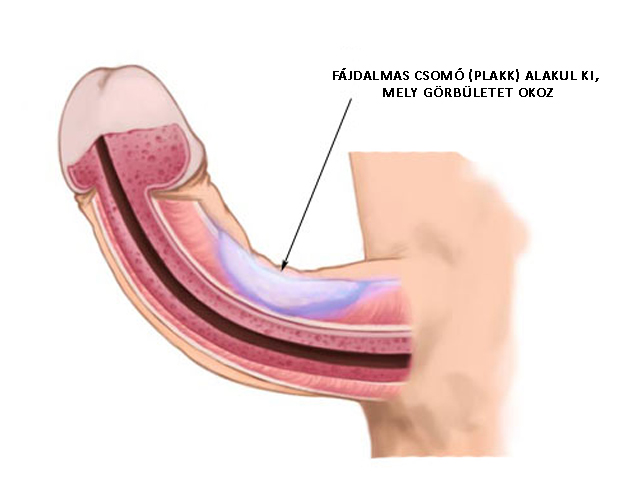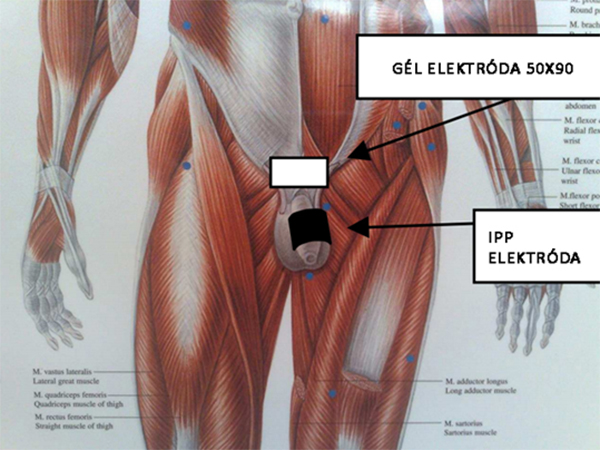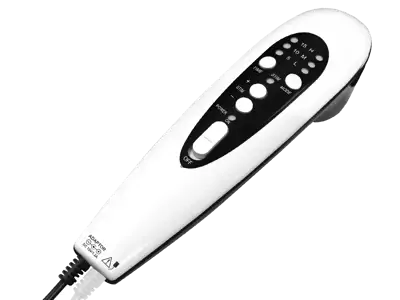Peyronie disease
In Peyronie's disease, nodules form in the penis, causing abnormal curvature, pain, erectile dysfunction and impotence in severe cases
Read more...Peyronie's disease is a lesion affecting the penis
- The "lumps" in the penis cause abnormal curvature, pain, erectile dysfunction in severe cases and impotence.
- As the curvature increases, the problem becomes more severe
- Coitus is possible with a curvature of between 5 and 20 degrees
- Coitus is difficult or impossible with a curvature of between 20 and 45 degrees.
- Coital is not possible with curvature over 45 degrees.
- According to research, up to 5-8% of men over 40 are affected
- but those who suffer from the symptoms "hide" their intimate complaints.
- Peyronie's disease can have a severe psychological impact - sufferers are often depressed. * The disease occurs in men over 40 years of age.
- If you suspect the disease, consult a doctor!

Treatment of Peyronie's disease
Depends on the severity of the disease...some of these can only be done by a doctor, but there are also home treatments. You can use these under the guidance of your doctor after an examination.
- Medicines:
- Oral medications are used to reduce the size of the plaque, pain in the penis and curvature. The big disadvantage of oral medication is that a large part of it breaks down in the digestive system and only a very small part of it reaches where it should: the penis.
- Intralesional injection: medication is injected around the plaque. Yes, the needle is stuck directly into the penis... Obviously, this should only be done in the most sterile conditions by a competent doctor.
- ultrasound treatment: ultrasound "phonoaphoresis" is used. Ultrasound treatment of the penis "massages" the medication (which is applied to the skin) up to the plaque. This treatment can be carried out in a physiotherapy clinic or, after proper explanation, at home with a therapeutic ultrasound machine.
- Ionophoresis: this method uses a weak and harmless electric current. The electrically charged (ionic) active ingredients are electrically charged by a current flowing between two poles of the current. The big advantage is that the active substance is delivered directly and in large doses to where it is needed - directly into the plaque. And all without the needle prick. Iontophoresis treatment can also be given in a physiotherapy practice, but can also be done at home with an iontophoresis device after proper explanation.
- Surgical intervention: surgery should only be performed after at least 3 months of stability. In this case, either the plaque is removed by surgery or the connective tissue on the opposite side is also shortened. Partial success is common, with residual symptoms such as incontinence, impotence... surgery should be a last resort...
- Wet the IPP electrode with water and then pour the active substance or medication (prescribed by your doctor) onto it.
- Check the polarity of the active substance and connect the two ends of the cable accordingly to ensure proper action.
- Positive polarity drug: connect the red terminal to the electrode.
- Negative polarity drug: connect the black terminal to the electrode.
- Bipolar drug: connect the red or black terminal to the electrode (whichever one you choose, as the solution will flow with both).
- Place the IPP electrode on the penis and close the Velcro.
- Adhere a self-adhesive TENS electrode pin (preferably 50-90mm in size) to the base of the penis. The electrode will not adhere to the hair, so shave the pubic hair off the area under the electrode - without this the treatment may be ineffective!
- Connect the IPP electrode to the appropriate coloured cable end and the TENS electrode to the other end. Plug the cable into channel 1 (CH1) of the device.
- Start the treatment with a low frequency iontophoresis program. Refer to the user manual of the device for the settings.
- For the first treatments, a treatment time of 10-15 minutes is recommended. After a few treatments, the duration can be increased by a few minutes.
- The current intensity should be set to produce a firm "pinching" sensation - never painful.
- Consult your doctor or specialist before starting treatment and to determine the treatment time.
- The IPP electrode is not sterile, do not place it on injured, bruised or wounded areas
- Cleaning: wash the electrode in lukewarm soapy water and clean with a disinfectant. After cleaning, wash the electrode in running water and dry it. Do not leave the electrode connected to the cable as this may cause corrosion.
Electrode placement in Peyronie's disease






